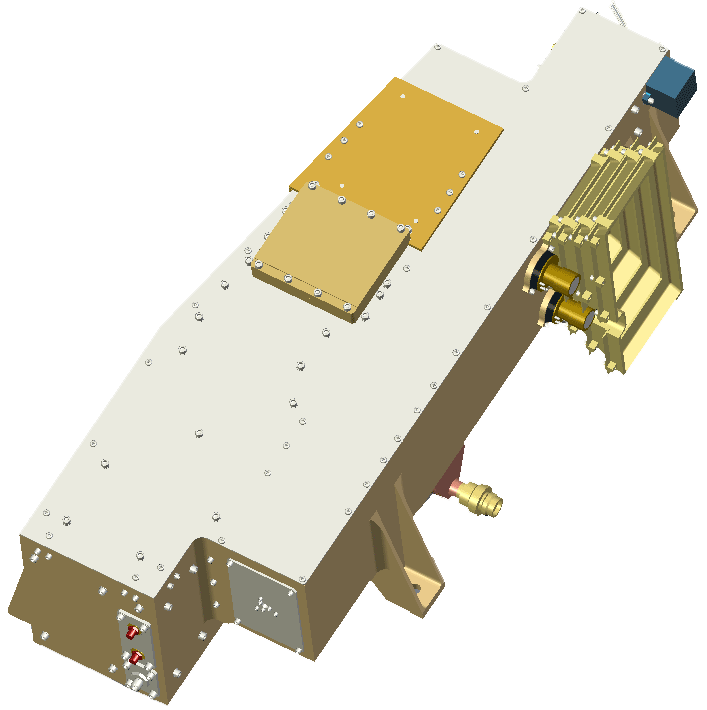

UVS General Description
UVS is a UV imaging spectrograph sensitive to both extreme and far ultra-violet emissions in the 70-205 nm range that are used to characterize the morphology and spectral nature of Jupiter’s auroral emissions as they are targeted during the Juno mission.
UVS consists of two separate sections: a dedicated telescope/spectrograph sensor assembly and a vault electronics box. The telescope/spectrograph assembly contains a telescope which feeds a 0.15-m Rowland circle spectrograph. The telescope has an input aperture 40 x 40 mm2 and uses an off-axis parabolic primary mirror. A flat scan mirror situated at the front end of the telescope (used to observe at up to ±30° perpendicular to the Juno spacecraft spin plane) directs incoming light to the primary. The light is focused onto the spectrograph entrance slit, which has a “dog-bone” shape 7.1° long, in two 2.5° sections of 0.2° width and one (middle) 2.0° section of 0.025° width (projected onto the sky). Light entering the slit is dispersed by a toroidal grating which focuses the UV passband onto a curved microchannel plate (MCP) cross delay line (XDL) detector with a solar blind UV-sensitive CsI photocathode, which makes up the UVS focal plane. Tantalum surrounds the detector assembly to shield the detector from high-energy electrons. Detector electronics are located behind the detector and are also shielded. The electronics box is located in the spacecraft vault. Inside are two redundant high-voltage power supplies (HVPS), two redundant low-voltage power supplies, command and data handling (C&DH) electronics, heater/actuator activation electronics, scan mirror electronics, and event processing electronics.


